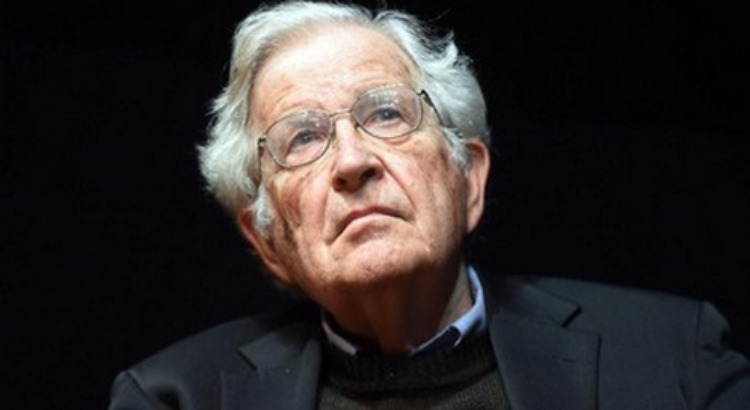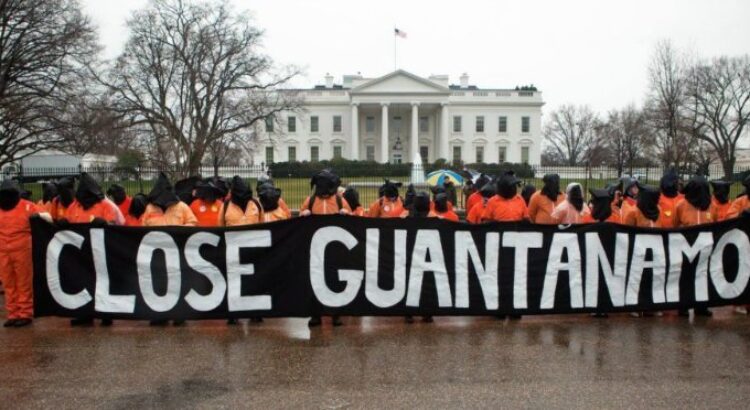La última vez que participé de las reuniones del Foro Social Mundial (FSM) en Brasil fue hace 20 años – maravillosos días de exuberancia, vitalidad, expectativa, entusiasta interacción de los participantes que se extendieron desde la Vía Campesina hasta los centros urbanos, unidos en la creencia de que un mundo mejor es posible y está comprometido a crearlo. Rechazaron firmemente la famosa máxima de Margaret Thatcher: » No hay alternativa «. No hay alternativa al régimen neoliberal que ella y Ronald Reagan estaban tratando de imponer al mundo. El lema del FSM era todo lo contrario: hay una alternativa y la vamos a crear.
Este no es exactamente el clima de hoy.
La emoción en el FSM no estuvo fuera de lugar. Brasil estaba a punto de entrar en su «década dorada», una expresión utilizada por el Banco Mundial en su evaluación retrospectiva de los años de Lula, que analiza los numerosos logros nacionales del gobierno, mientras que Brasil también se convirtió quizás en el país más respetado del mundo y en una voz elocuente para el Sur Global bajo el liderazgo del presidente Lula y su canciller Celso Amorim.
Una vez más, este no es exactamente el clima actual.
La acomodación del gobierno de Lula a las demandas del capital privado internacional, se piense lo que se piense, no fue suficiente para apaciguar a quienes Adam Smith llamó “los señores de la humanidad”. La reacción llegó pronto, no solo en Brasil.
No es necesario revisar los hechos ocurridos desde entonces ni abordar la forma en que se ve a Brasil ahora. Esto quizás esté simbolizado por la ayuda de Venezuela para proporcionar oxígeno para aliviar la catástrofe en Manaos, que ahora se está extendiendo a otras partes de un país famoso por su alto nivel de investigación y logros en las ciencias de la salud y un historial estelar de eficiencia de vacunación, antes del asalto actual a sociedad.
Para agregar una comparación personal, mi esposa Valeria y yo, que vivimos en Arizona, tenemos el privilegio inusual de haber obtenido máscaras de alta calidad, gracias a la generosidad de un amigo de Taiwán. Mientras tanto, Arizona acaba de ganar el campeonato mundial de infecciones per cápita de Covid.
Arizona está un poco por delante de la competencia para ser la peor del mundo. Mientras escribo, el titular del New York Times dice: «Nueva situación de pandemia: los hospitales se están quedando sin vacunas», refiriéndose a todo el país.
La historia continúa informando que “los funcionarios de salud de EE. UU. Están frustrados porque las dosis disponibles no se utilizan mientras el virus mata a miles de personas todos los días. Se han cancelado miles de vacunaciones programadas y las autoridades locales a menudo no están seguras de qué suministros tendrán a mano «. La prensa local agrega que los hospitales ya no tienen camas y que la gente muere en los pasillos. El panorama es el mismo en cualquier lugar del país más rico del mundo, con ventajas incomparables.
En la misma portada del NYT, junto al informe de la catástrofe en Estados Unidos, hay una nota titulada «Un año después del bloqueo: esto es Wuhan hoy». Retrata a personas deleitándose en «un mundo post-pandémico, donde el relieve de rostros sin máscaras, encuentros felices y viajes diarios esconde trastornos emocionales».
El número de muertes diarias por Covid 19 en los EE. UU. Es aproximadamente de tres a cuatro veces mayor que el número total de muertes en China durante el año de la pandemia, en equivalente per cápita, la medida correcta.
No podemos ser demasiado superficiales al extraer lecciones de lo que sucedió en todo el mundo en este año terrible, pero sería una tontería ignorar la historia. Es instructivo en todo el mundo. Mi estado natal, Pensilvania, tiene casi la misma población que Cuba y 100 veces el número de muertes por Covid: 20.000 en comparación con 200. Las muertes por Covid en la ciudad de São Paulo tienen una tasa similar a la de Pensilvania en comparación con Cuba. (100 veces mayor).
Es común atribuir el éxito de China, en contraste con la catástrofe estadounidense, al estricto control autoritario de China sobre la población. La conclusión no es convincente. Taiwán es tan libre y democrático como Estados Unidos. Su población de 24 millones registró siete muertes. Además, los observadores occidentales en China informan que la aceptación popular de los procedimientos muy estrictos que prácticamente han eliminado la enfermedad parece haber sido en gran parte voluntaria y de apoyo.
Un intento de revisión en todo el mundo parece indicar que los principales factores para domar la catástrofe han sido un gobierno eficaz que actúe por el bienestar de su población, combinado con una mentalidad colectivista general y un espíritu de cooperación: todos estamos juntos en esto. , al bien común.
Es útil observar más de cerca las peores actuaciones. Dejaré a Brasil en paz, un caso que es demasiado deprimente para discutirlo. Los más instructivos son Estados Unidos y su aliado británico más cercano, ambos con terribles antecedentes, resaltados por su inusual privilegio y desarrollo económico. También son poco comunes en otro aspecto. Son el hogar de los programas neoliberales que han barrido el mundo durante los últimos 40 años, dirigidos por Reagan y Thatcher, y luego por sus sucesores. Estas doctrinas contribuyeron poderosamente a crear e intensificar la crisis de Covid. Los ricos y poderosos beneficiarios de los programas neoliberales ahora están trabajando arduamente para garantizar que darán forma a la sociedad pospandémica. Las doctrinas y sus consecuencias deben examinarse de cerca.
Un impulso central del neoliberalismo es desmantelar la sociedad civil y disminuir la preocupación del gobierno por el bienestar del público en general. Como proclamó Thatcher, «no hay sociedad», solo individuos que se enfrentan solos a las fuerzas del Mercado Sagrado y, si no sobreviven a la devastación, mala suerte. Para citar uno de los famosos pronunciamientos del presidente de Brasil: «¿y qué?»
Para ser precisos, bajo la doctrina neoliberal, solo unos pocos se lanzan al mercado para sobrevivir de alguna manera. Otros tienen derecho a ser mimados por el estado, es decir, por sus desafortunados ciudadanos. No debemos olvidar nunca el dicho de Balzac, extraído de la sabiduría popular tradicional, de que «las leyes son telarañas por las que pasan grandes moscas y atrapan las pequeñas». Los programas neoliberales se han diseñado cuidadosamente para garantizar que prevalezcan estos principios, con subsidios masivos y rescates para las moscas grandes. Hemos sido testigos de esto repetidamente desde los primeros días del ataque neoliberal.
Los pensamientos de Thatcher no eran originales. Sin quererlo, estaba parafraseando a Karl Marx. Condenó a los gobernantes autocráticos de Europa por intentar convertir la sociedad en “un saco de patatas”, individuos aislados, atomizados, luchando solos, sin sociedad civil, sin organizaciones de defensa popular contra el poder concentrado.
Reagan y Thatcher siguieron el guión con atención. Sus primeros actos fueron destruir los sindicatos, en el caso de Reagan, incluso incorporando trabajadores suplentes permanentes, práctica que pronto adoptaron las empresas privadas. Los golpes de martillo contra la organización del trabajo continuaron bajo sus sucesores. Estudios recientes de destacados economistas, como Lawrence Summers, atribuyen la espectacular desigualdad creada durante los años neoliberales principalmente a la destrucción de los sindicatos, privando a los trabajadores de cualquier medio de autodefensa frente a la incesante lucha de clases.
Las doctrinas del ataque de 40 años a la sociedad se remontan a los orígenes del neoliberalismo en Viena en el período de entreguerras. El venerado padre fundador del movimiento, Ludwig von Mises, apenas pudo contener su euforia cuando el gobierno protofascista aplastó violentamente al vibrante movimiento obrero austriaco y elogió efusivamente al fascismo de Mussolini por haber “salvado la civilización europea. El mérito que el fascismo ha ganado vivirá para siempre en la historia ”, escribió Mises en su libro clásico“ Liberalismo ”, años después de que las camisas negras llevaran violentamente a los sindicatos y al pensamiento independiente a sus lugares apropiados.
Las principales luces del neoliberalismo estaban aún más entusiasmadas con la dictadura asesina de Pinochet. Por razones de principio. Se deben tomar medidas severas para salvaguardar una «economía sólida», asegurando que no habrá restricciones populares a la libertad de los muy ricos y del sector empresarial para expandir su riqueza y poder.
El ideal es la economía de «privatizar todo», citando al actual Ministro de Economía de Brasil, muy elogiado por las finanzas internacionales que desean tomar los recursos de Brasil, de su pueblo, bajo la bandera neoliberal.
Estas son consideraciones a tener en cuenta al pensar en un mundo pospandémico. Revelan que no existe conflicto entre el llamado a la libertad, de cierto tipo, y las duras medidas de represión y control. Además, como mencioné, hay fuerzas poderosas que trabajan arduamente ahora para garantizar que el mundo pospandémico mantenga las principales armas de la lucha de clases incrustadas en la doctrina neoliberal. Razón de más para examinar los principios básicos y sus consecuencias.
Las ideas esenciales quedan plasmadas en el discurso inaugural de Reagan: «el gobierno es el problema, no la solución». Esto no significa que las decisiones a nivel nacional desaparezcan. En cambio, son transferidos a manos de los “señores de la humanidad”, las grandes megacorporaciones y las instituciones financieras que explotaron en escala durante los años neoliberales. Su responsabilidad había sido explicada por los economistas responsables, principalmente Milton Friedman. La única responsabilidad de las empresas es enriquecerse.
No es difícil prever las consecuencias de entregar la toma de decisiones a instituciones tiránicas cuyo único propósito es el enriquecimiento. Algunos se revelan en un estudio reciente de Rand Corporation, una institución cuasi gubernamental. Ella estima que la transferencia de riqueza, desde el 90% más bajo de los ingresos de la población a los muy ricos, principalmente la fracción superior del 1%, fue de 47 billones de dólares. No es poco, sino una subestimación muy grave. No toma en cuenta la apertura de Reagan a la manipulación financiera previamente prohibida por la ley, como los paraísos fiscales, que agregan otras decenas de billones de dólares al robo masivo de trabajadores y la clase media.
Los resultados están ante nuestros ojos, dondequiera que haya golpeado el mazo. En los Estados Unidos, los salarios reales de los trabajadores varones disminuyeron durante el ataque de 40 años, junto con los beneficios y, como mínimo, una seguridad limitada. La democracia política, siempre profundamente defectuosa, ha disminuido aún más a medida que está cada vez más subordinada a la riqueza privada y al poder corporativo. Los estudios recientes más sofisticados muestran que el 90% de la población literalmente no está representada; sus propios representantes están escuchando otras voces, las de los financistas de su próxima campaña. Mientras tanto, el personal de sus oficinas está sobrecargado con enjambres de cabilderos que prácticamente redactan leyes.
Sin tener que avanzar, se puede llegar a comprender algunas de las raíces de la ira, el resentimiento, el desprecio por las instituciones que se han extendido por gran parte del mundo, fácilmente capturadas por demagogos que pueden pretender defender a las masas desposeídas mientras las apuñalan por la espalda , transfiriendo la culpa de su malestar a los objetivos vulnerables: personas no blancas, inmigrantes, peligro amarillo, cualquier veneno que corra justo debajo de la superficie de la vida social.
Una visión de futuro, ahora activamente perseguida por los sectores dominantes, es la perpetuación de esta monstruosidad, de formas aún más duras: vigilancia, control, atomización y precariedad más intensos para la gran masa de la población.
Otra visión es la impulsada por el Foro Social Mundial. Una visión de un mundo en el que las personas tomen el control de su propio destino en comunidades autónomas y lugares de trabajo, deshaciéndose de sus amos, dominación e instituciones represivas. Un mundo que mantiene el clásico ideal liberal, reprimido durante mucho tiempo, de que debemos reemplazar las trabas sociales por lazos sociales. Un mundo que incorpora una cultura de solidaridad y ayuda mutua, de participación directa en todos los ámbitos de ciudadanos informados y comprometidos que se dedican al bien común.
Esta visión no es utópica. Se puede lograr. Además, debe lograrse de alguna manera para que exista el experimento humano. No es ningún secreto que estamos viviendo un momento notable en la historia de la humanidad, una confluencia de crisis extremadamente graves. A menos que se superen los desafíos, y pronto, será una pérdida de tiempo contemplar los contornos de una sociedad pospandémica, porque no habrá sociedad alguna. Esto no es una exageración.
La crisis menos grave de todas es la que, comprensiblemente, está atrayendo ahora la atención y la preocupación: la pandemia. Tarde o temprano, la pandemia será contenida, a un costo terrible e innecesario, como podemos ver en las sociedades, ricas y pobres, que han logrado enfrentarla con eficacia. Pero la pandemia se superará y, si la historia sirve de guía, pronto se olvidará.
Piense en la llamada gripe española de hace un siglo. El número de muertos fue colosal. Se estima en unos 50 millones de personas. Considerando el tamaño de la población, eso sería el equivalente a 300 millones de personas hoy. Un desastre inimaginable que, sin embargo, pronto fue olvidado. Nací unos años después de que se calmara la crisis. Nunca supe de ella cuando era niño. Lo aprendí de los libros de historia.
Si revivimos esa experiencia, tendremos serios problemas. Es probable que ocurran otras epidemias de coronavirus y pueden ser más graves que esta, debido a la destrucción del hábitat y el calentamiento global. Además, hasta ahora hemos tenido suerte. Las recientes epidemias de coronavirus han sido muy contagiosas y poco letales, como la actual, o muy letales, pero no muy contagiosas, como el ébola. Puede que no tengamos tanta suerte la próxima vez. Estas astutas criaturas tienen muchos trucos bajo la manga.
En los últimos años, los científicos nos han dicho claramente lo que se debe hacer. No fue hecho. Las enormes y ricas instituciones farmacéuticas no estaban interesadas, gracias a la lógica capitalista. No es rentable prepararse para un desastre que ocurrirá dentro de unos años. El gobierno de Estados Unidos y algunos otros tienen laboratorios maravillosos, que de hecho proporcionan muchos de los descubrimientos básicos de medicamentos y vacunas que se comercializan con fines de lucro en nuestro sistema económico de subsidio público y lucro privado. Pero fueron neutralizados por la variante neoliberal destructiva del capitalismo: el gobierno debe mantenerse al margen del negocio de la empresa privada, excepto, por supuesto, cuando pueden beneficiarse de la generosidad de los contribuyentes. El desastre se vio agravado por la incompetencia y, en algunos casos,
Hoy escuchamos las mismas súplicas de los científicos, las mismas advertencias y consejos sobre lo que se debe hacer para prevenir desastres. El mero conocimiento no es suficiente. Debe ponerse en uso.
La pandemia actual y las que vendrán son una de las crisis actuales. Una crisis mucho más grave es el calentamiento del planeta. La urgencia del desarrollo de la crisis se puso de relieve nuevamente hace unas semanas, cuando la Organización Meteorológica Mundial publicó su Informe anual sobre el estado del medio ambiente mundial. El Informe advierte que en nuestro curso actual, pronto podríamos alcanzar puntos de inflexión irreversibles. Pronto seremos capaces de lograr lo que ellos llaman » Tierra de invernadero”(Terra Estufa), estabilizándose a 4-5º Celsius por encima de los niveles preindustriales, mucho más allá del nivel reconocido como cataclísmico. El estudio concluye que es «más urgente que nunca proceder con la mitigación … La única solución es deshacerse de los combustibles fósiles en la producción de energía, la industria y el transporte». El IPCC (Panel Intergubernamental de Cambio Climático) marca, muy pronto, la fecha para lograr este resultado, a mediados de siglo.
Al igual que con la pandemia, sabemos cómo lograr ese objetivo. Hay medios viables que se han descrito con gran detalle y se están implementando en parte, pero solo en parte. Estos esfuerzos deben acelerarse rápidamente y pronto, o el juego terminará. Los científicos respetados nos dicen en términos inequívocos que debemos «entrar en pánico ahora». No están exagerando.
Otra crisis de escala comparable es la creciente amenaza de las armas nucleares, que recibe muy poca atención fuera de los círculos especializados, donde la crisis se reconoce como extremadamente grave. Aquí, la solución es obvia: libra a la Tierra de estas monstruosidades. Se han tomado medidas importantes. El viernes pasado entró en vigor el Tratado de la ONU sobre la Prohibición de las Armas Nucleares, apoyado por 122 naciones, aunque, lamentablemente, ninguna de las potencias nucleares. Eso tiene que cambiar. Incluso por debajo de eso, hay acciones muy significativas que se pueden implementar, pero no hay tiempo para discutir aquí.
Todas estas crisis son internacionales. No conocen fronteras. Deben enfrentarse a la solidaridad internacional. En ese caso, las palabras de Margaret Thatcher son correctas. No hay alternativa.
https://www.cartamaior.com.br/?/Editoria/Sociedade-e-Cultura/A-sociedade-global-pos-pandemia/52/49875
Fuente e imagen: https://www.alainet.org/en/articulo/210849

















 Users Today : 10
Users Today : 10 Total Users : 35460683
Total Users : 35460683 Views Today : 19
Views Today : 19 Total views : 3419801
Total views : 3419801